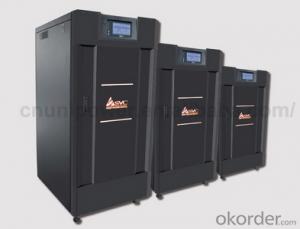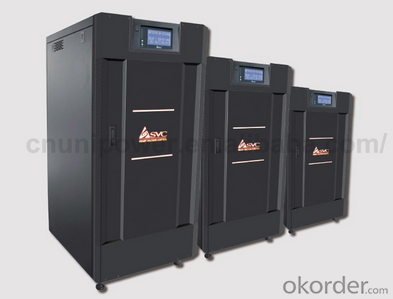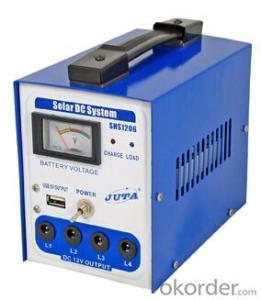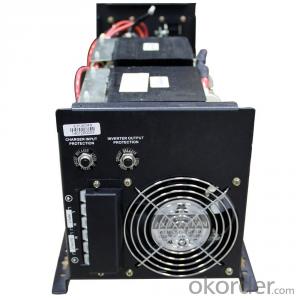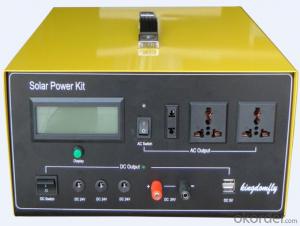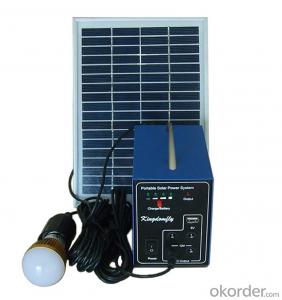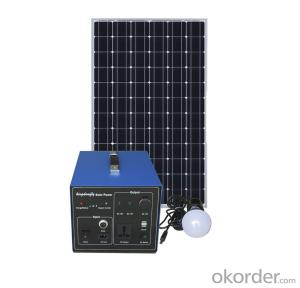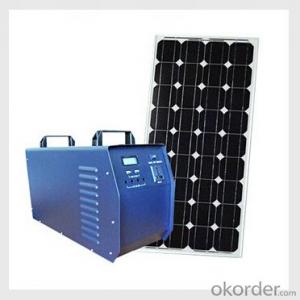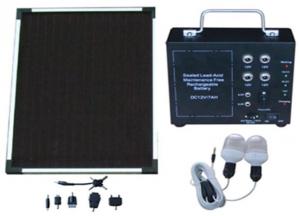Nexus Solar Energy Systems UPS Types Office Equipment Low Frequency 20~200kVA Front Office Equipment
- Loading Port:
- China main port
- Payment Terms:
- TT OR LC
- Min Order Qty:
- 20 carton
- Supply Capability:
- 10000 carton/month
OKorder Service Pledge
OKorder Financial Service
You Might Also Like
Online Low Frequency 20~200KVA UPS Types Front Office Equipment
| MODEL | GP33-20-30 | GP33-40-60 | GP33-80-100 | GP33-120-200 |
| Capacity | 20~30KVA | 40~60KVA | 80~100KVA | 120~200KVA |
| Type | Tower | |||
| INPUT | ||||
| Voltage | (208 or 380 or 400 or 480 Vac) ± 20% / 5 wires (3 Lines + Neutral + Ground) | |||
| Frequency | 50 or 60Hz ± 10% Autosensing | |||
| Power factor | 0.98 | |||
| Filter | EMI, RFI | |||
| Dual input | Optional | |||
| OUTPUT | ||||
| Voltage | (208 or 380 or 400 or 480 Vac) ± 20% / 5 wires (3 Lines + Neutral + Ground) | |||
| Frequency | 50 or 60Hz ± 0.1% | |||
| Effciency | AC / AC > 92% | |||
| Trandfer time | 0 ms | |||
| Wave form | Sine wave | |||
| Power factor | 0.9 | |||
| Voltage T.H.D. | < 2% with linear load< td=""> | |||
| Crest factor | 3 : 1 | |||
| Technology | True on-line double conversion controlled by microcontroller | |||
| Overload recovery | Automatically transfer to UPS mode | |||
| Isolation transformer | Inverter mode ( bypass mode is optional ) | |||
| Parallel connection | Parallel connection function is ready (extra PCB is not required ) | |||
| BATTERY | ||||
| Battery type | VRLA ( Valve Regulated Lead Acid ), not included | |||
| DC voltage | 384 Vac | 480 Vdc | ||
| Charging time | 4 hours up to 90% | |||
| Battery detection | self-detect, transfer to battery mode adjustable | |||
| PROTECTION | ||||
Lighting and transient protection | Hotswappable lightning and transient surge suppressor (In:10 Kamp, Up:1.5 Kv, I max : 20 K amp. ) | |||
| Hardware protection | output breaker, battery breaker, bypass breaker; DC fuse, fan, redundant power supply; temperature sensor, EPO (Emergency Power Off), audible alarms etc. | |||
| Software protection | Discharging batteries, battery charge working mode, inverter working mode, emergency power off, manual shutdown, bypass SCR failure, bypass sequence failure, bypass over the lilit, critical overload, batteries exhaustion, low or high output voltage, DC fuse open, 5v power supply failure, 13.5V power supply failure, inverter overvoltage, 200% overload on each line, transfer failure, inverter voltage out of range, over voltage between neutral and ground, UPS on bypass mode, bypass frequency out opf range. | |||
| Bypass | Solid state | |||
| Overload | 125% for 10 min, 150% for 30 sec, 1000% for 16 millisencond. | |||
| EPO | EPO local and / or remote | |||
| Display | LCD, touch screen | |||
| LED's diagram | Included | |||
| Communication | RS232 intellident Slot, modem, SNMP(RJ45) (SNMP adaptive Software is supplied by the producer) | |||
| ENVIRONMENT | ||||
| Elevation | 1.700 m.o.s. 1 without derrating | |||
Temperature & noise | 0℃~40℃ / < 60db @ 1.5m.< td=""> | |||
| Humidity | Non condensate | |||
| PHYSICAL | ||||
| Dimension(mm) | 520*1600*550 | 520*1670*780 | 1000*1860*870 | Ask for information |
Weight (without batteries) | 150 | 300 | 600 | |

Product Description

1. Wide range of input voltage
The UPS can offer normal and stable service voltage under its input voltage range. When the input voltage is out of its range the machine will switch to battery mode automatically to keep the output power in order to protect the equipment, such as computers, ensure they will not be damaged by the over high or over low voltage, users can continue the operation of equipment for a while or save the data on computers while the power network is abnormal.
2. Wide range of AVR(Automatic voltage regulation)
In the product’s input voltage range and under 3 steps of intelligent AVR function, it can provide a stable output voltage.
3. Automatic self detection when UPS on(LED).
Before the UPS on, red, yellow, blue LED will light up two times by cycle turns, after self detection UPS switch to AC mode/battery mode or working mode.
4. Silence function
In the "battery mode", shortly press the switch to turn off the buzzer. But the battery is about to run out or the load is too heavy, the buzzer sound cannot be muted.
5. Overload protection
In the battery mode, output voltage turn down correspondingly when it is overload, after the capacity of load is lower than the rated power then output voltage will back to rated value, it ensures the UPS will not shut down by abrupt overload which caused by surging current during the computer is working and other equipment is added.
6. Short circuit protection
When the mis-operation caused the load short circuit or computer failure (such as power tube breakdown of switch) cause short circuit, the UPS will shutdown automatically for protection.
7. The low current switch
This UPS adopts low current switch to extend the service life which is longer than conventional battery and high current switch in AC current path.
8. Automatic charging
There are two charging mode, charging time is faster than ordinary charging mode, higher efficiency, and greatly prolonging the service life of the battery.
9. With a bypass output
Independent bypass output socket for external printers or scanners of computer peripherals, with surge protection of the load.
- Q: Can solar energy systems be used to power agricultural operations?
- Yes, solar energy systems can be used to power agricultural operations. Solar panels can be installed on rooftops or open fields to capture sunlight and convert it into electricity. This renewable energy source can be used to power various agricultural operations such as irrigation systems, greenhouse lighting, machinery, and other electrical needs on farms. By utilizing solar energy, farmers can reduce their reliance on fossil fuels, lower operating costs, and contribute to a more sustainable and environmentally friendly agricultural industry.
- Q: Can solar energy systems be used to power large industrial facilities?
- Yes, solar energy systems can be used to power large industrial facilities. Advances in solar technology and the availability of large-scale solar installations make it feasible to generate significant amounts of electricity to meet the energy demands of industrial facilities. Additionally, the use of solar energy can help reduce carbon emissions and provide long-term cost savings for these facilities.
- Q: Can solar energy systems be used for powering electric vehicles charging stations?
- Yes, solar energy systems can be used to power electric vehicle charging stations. Solar panels can generate electricity from sunlight, which can then be stored in batteries or directly used to charge electric vehicles. This renewable energy source is environmentally friendly and can help reduce the carbon footprint associated with transportation.
- Q: How does a solar energy system connect to the electrical grid?
- A solar energy system connects to the electrical grid through a process called net metering. Net metering allows solar energy system owners to receive credits for the excess electricity they generate and feed back into the grid. The solar panels in a solar energy system convert sunlight into direct current (DC) electricity. This DC electricity is then sent to an inverter, which converts it into alternating current (AC) electricity that is compatible with the electrical grid. The AC electricity is then sent to the main electrical panel of the building or residence, where it can be used to power the electrical appliances and devices within the premises. If the solar energy system generates more electricity than is needed at a particular time, the excess electricity is sent back to the grid through a bi-directional meter. The bi-directional meter measures both the electricity consumed from the grid and the excess electricity sent back to the grid. The excess electricity is credited to the solar energy system owner's account, effectively spinning the meter backward. These credits can be used to offset the electricity consumed from the grid during times when the solar panels are not generating enough electricity, such as at night or during cloudy days. By connecting to the electrical grid, a solar energy system ensures a reliable and continuous supply of electricity. It also allows the system owner to benefit financially by reducing their electricity bills and potentially earning income through the excess electricity sent back to the grid.
- Q: How do solar energy systems impact energy policy and regulation?
- Solar energy systems have a significant impact on energy policy and regulation by promoting the adoption of renewable energy sources and reducing dependence on fossil fuels. Governments and regulatory bodies often implement policies and regulations that incentivize the installation and use of solar energy systems, such as feed-in tariffs or tax credits. This helps to accelerate the transition to clean energy and achieve sustainability goals. Additionally, solar energy systems can influence the development of grid infrastructure and energy storage technologies to accommodate the intermittent nature of solar power, leading to a more resilient and decentralized energy system.
- Q: Can solar energy systems be used for powering off-grid educational institutions?
- Yes, solar energy systems can indeed be used for powering off-grid educational institutions. Solar panels can be installed on the rooftops of buildings to harness the sun's energy and convert it into electricity. This renewable energy source can then be used to power various electrical appliances, lighting, and other necessities within the educational institution. By utilizing solar power, off-grid educational institutions can reduce their dependence on traditional energy sources and contribute to a more sustainable and environmentally friendly way of generating electricity.
- Q: Can solar energy systems be used for powering electric vehicle public transportation systems?
- Using solar energy systems is definitely possible to power electric vehicle public transportation systems. Solar energy is an abundant, renewable, and clean power source that can be utilized to produce electricity for various purposes, including charging electric vehicles. To generate electricity, solar panels can be installed on the roofs of public transportation facilities like bus depots or charging stations. This generated energy can then be used to charge the batteries of electric buses or other electric vehicles used in public transportation. The scalability of solar power systems makes them well-suited for public transportation infrastructure. Depending on the size of the solar installation, it is feasible to generate sufficient electricity to power an entire fleet of electric buses or other public transport vehicles. This reduces reliance on fossil fuels and lowers greenhouse gas emissions, resulting in a cleaner and more sustainable transportation system. Moreover, solar energy systems can be combined with energy storage technologies like batteries. This ensures a continuous power supply even during periods of low solar irradiation or at night, providing a reliable and uninterrupted charging infrastructure for electric vehicles. Apart from the environmental benefits, solar-powered electric public transportation systems can also lead to long-term cost savings. Although the initial investment for installing solar panels may be higher, the operational costs are significantly lower compared to traditional fossil fuel-based systems. Solar energy is free, and once the infrastructure is established, ongoing expenses are minimal. This can result in substantial savings for public transportation authorities over the system's lifetime. In conclusion, solar energy systems offer a viable and sustainable solution for powering electric vehicle public transportation systems. They provide environmental benefits, cost savings, and contribute to reducing dependence on fossil fuels. With the advancement of solar technology and decreasing costs, integrating solar power in public transportation infrastructure holds promise for a cleaner and greener future.
- Q: Can solar panels be integrated into building materials like windows or roofing tiles?
- Yes, solar panels can be integrated into building materials such as windows or roofing tiles. This integration is known as building-integrated photovoltaics (BIPV), and it allows solar energy to be generated while seamlessly blending with the building's design. BIPV solutions are increasingly being used to enhance energy efficiency in buildings and promote sustainable practices.
- Q: Can solar energy systems be used for powering electric vehicle solar charging parking lots?
- Yes, solar energy systems can be used to power electric vehicle solar charging parking lots. Solar panels can be installed on the parking lot's canopy or on nearby structures to generate electricity from sunlight. This clean and renewable energy can then be utilized to charge electric vehicles parked in the lot, reducing dependence on non-renewable energy sources and lowering carbon emissions associated with transportation.
- Q: Can solar energy systems be used for powering military or defense installations?
- Certainly, military and defense installations can utilize solar energy systems to power their operations. In fact, numerous military and defense organizations worldwide are increasingly adopting solar energy systems as a dependable and sustainable power source. There are multiple reasons why solar energy systems are suitable for military and defense installations. Firstly, solar power is an abundant and widely accessible renewable energy source. This implies that military installations located in remote or off-grid areas can still have access to electricity without depending on costly and logistically challenging traditional fossil fuel-based generators. Additionally, solar energy systems offer a decentralized power supply option, reducing dependence on vulnerable and centralized power grids. This diminishes the susceptibility of military installations to power outages or attacks on critical infrastructure. Solar panels can be conveniently installed on rooftops, parking lots, or unused land within the military base, making optimal use of available space. Furthermore, solar energy systems necessitate minimal maintenance when compared to conventional power generation methods. This is especially advantageous for military or defense installations situated in remote or hostile environments, where regular maintenance and fuel supply for generators may be difficult or risky. Solar panels are long-lasting and durable, requiring only occasional cleaning and routine inspections. In addition to their reliability and resilience, solar energy systems offer economic advantages. By reducing reliance on fossil fuels, military installations can lower their operational costs and potentially save substantial amounts of money in the long term. These savings can then be allocated to other critical defense needs or utilized for the research and development of advanced military technologies. Moreover, the deployment of solar energy systems for military installations aligns with the global trend towards clean and sustainable energy solutions. It showcases a commitment to reducing greenhouse gas emissions and mitigating the impact of climate change, contributing to the overall sustainability objectives of military organizations. In conclusion, solar energy systems are a viable and practical choice for powering military or defense installations. They provide reliability, resilience, cost savings, and environmental benefits, making them an appealing option for military organizations seeking to optimize their energy supply and decrease their carbon footprint.
Send your message to us
Nexus Solar Energy Systems UPS Types Office Equipment Low Frequency 20~200kVA Front Office Equipment
- Loading Port:
- China main port
- Payment Terms:
- TT OR LC
- Min Order Qty:
- 20 carton
- Supply Capability:
- 10000 carton/month
OKorder Service Pledge
OKorder Financial Service
Similar products
Hot products
Hot Searches
Related keywords
